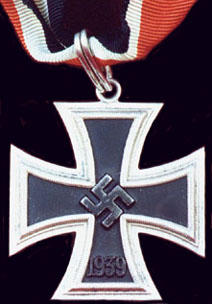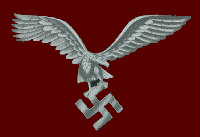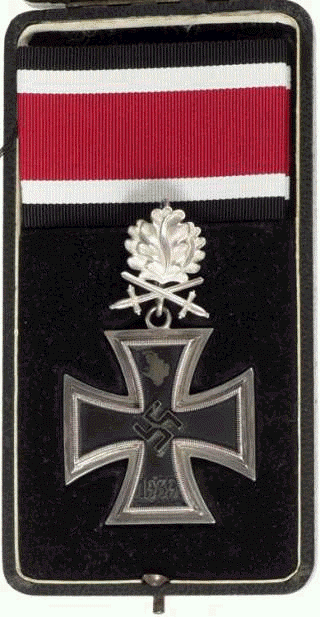|
|
|
 |
 |
Gallands Luftwaffe |
 |
 |
Knights Cross
Oak Leaves & Swords

|
As Germany’s Armed forces
moved into the Soviet Union, Hitler instituted the next
successive grade of the Knights Cross. The Oak Leaves and
Swords (Eichenlaub und Schwertern), authorized on July 15th
1941, were created as a further incentive to the Legions
of men now moving East. When presented, the Oak Leaves and Swords came in a box similar to that of the Oak Leaves, with the customary award documents. Once the Oak Leaves with Swords were awarded, the recipient would replace the Oak Leaves clasp with the Sword . The criteria for the Swords followed the same pattern as the Oak Leaves. Individuals presented with this award represented the best fighting men Germany had to offer. Members of the Heer and SS needed to have the most impressive portfolio in order to be considered, not only bravery but also combat and leadership skills were needed to rise above the rest and be recognized with the Swords. |
|
Lufftwaffe personnel followed the
same points system as in the preceding classes, with only
the most experienced aces reaching the points required.
The first recipient of the award was the famous Lufftwaffe officer Oberstleutnant Adolf Galland who received the Clasp on June 21st 1941 after attaining his 69th air victory in the west (before the award was even officially instituted). Only the most experienced U-boat aces are found in the Swords winner list. One of them is Freggattenkapitan Erich Topp, who received the Swords on the 17th of August 1942. Up to that point he had sunk over 243,000 tons of allied shipping. |
| A total of 159 Oak Leaves with Swords were presented during the war, a number that reflects the high standards required to achieve the Swords and the exclusiveness of the award. Only one foreign Officer was awarded the Oak Leaves and Swords, Japanese Grand Admiral Isoroku Yamamoto, who was presented with the awards posthumously in 1943. | |